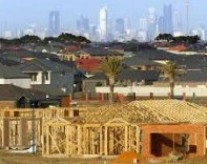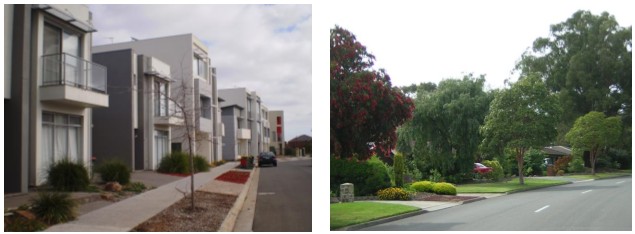
I have been a long-time skeptic of the purported environmental benefits of forced urban consolidation, which seeks to ameliorate concerns that excessive suburban sprawl is increasing humanity’s ecological footprint and greenhouse gas emissions. By restricting urban growth, it is claimed that these ‘costs’ can be reduced via less car dependence and energy usage, as well as more efficient (intensive) use of resources.
Back in January, Helen Brown, Lecturer in Health, Safety and Environment at Curtin University, gave inadvertent support to my position, arguing that the lack of trees in new housing developments is significantly increasing the use of air conditioners and energy use:
Air conditioners across the country are running on full this week as Australia battles a heatwave – but are we missing an obvious, leafy solution?
Trees, which provide shade and act as natural air conditioners, play an important role in helping to create cities that are more resilient to extreme temperatures as the climate warms. In urban areas, however, trees are under considerable pressure.
With last year’s record hot weather, and projections for more frequent and severe heatwaves, this week’s weather may be a sign of things to come.
So why are all the trees removed in so many of our developments?
The population of major Australian cities is expected to double in the next four to five decades. Planned increases in urban density are likely to result in the removal of a significant number of trees from urban areas.
Fewer trees in cities help create urban heat island effects – that’s when buildings and footpaths absorb the sun’s heat and then radiate it back out. Increases of up to three degrees are common and, in extreme cases, night-time increases of up to 12 degrees have been recorded.
And yesterday, a group of Melbourne and Monash University academics produced similar analysis, arguing that the loss of vegetation from urban consolidation is causing heat-island effects, in turn raising temperatures and energy use:
Urban vegetation has an important role in easing these temperatures, which means that a city’s public parks, remnant woodlands, residential gardens, nature strips, street trees, green roofs, green walls and rain gardens are all vital for maintaining its liveability.
As such, this greenery – collectively termed “urban green infrastructure” – confers a wealth of environmental, economic and health benefits to city residents. By actively cooling the urban landscape, it helps reduce energy use and carbon dioxide emissions, and ultimately lessens the risk of residents suffering heat stress, heatstroke or even death…
Ever-growing houses, on ever-shrinking plots, mean that the average backyard has shrunk. Population growth has driven up property prices so that residential blocks are being subdivided for units or townhouses.
Meanwhile, larger green open spaces are being sold and developed…
As one of the most urbanised countries in the world, Australia could benefit greatly from increasing the extent and quality of its urban green infrastructure. Doing so has repeatedly been shown to reduce the “urban heat island” effect – a critical issue considering climate change predictions foretelling more intense and more frequent heatwaves.
Thermal mapping observations collected in Melbourne suggest that on average, a 10% increase in urban green cover could reduce the daytime surface temperature during heatwaves in our cities by around 1°C. However, US research has shown that for a similar reduction in urban air temperatures, a much larger increase in greenery is required.
It’s worth noting that housing developments built in the 1960s, 1970s, 1980s and 1990s (represented below on the right) typically have large blocks, ample green space, and lots of tree cover. In short, they are a desirable places to live. Now compare these 20 to 50 year-old developments with the cluttered rubbish produced today (represented below on the left), and tell me which is better for the environment, let alone housing affordability?


